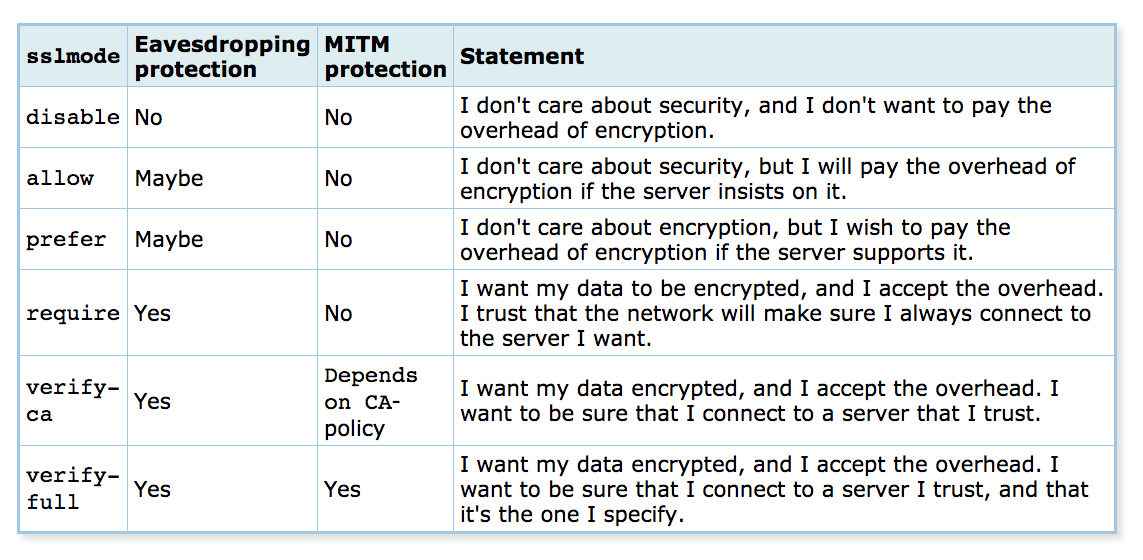Postgres SSLMODE Explained
When you connect to a database, Postgres uses the sslmode parameter to determine the security of the connection. There are many options, so here’s an analogy to web security:
disableis HTTPverify-fullis HTTPS
All the other options fall somewhere in between, and by design, make less guarantees of security than HTTPS in your browser does.

This includes the default prefer. The Postgres docs have a great table explaining this:

Other modes like require are still useful in protecting against passive attacks (sniffing), but are vulnerable to active attacks that can compromise your credentials. Tarjei Husøy created postgres-mitm to demonstrate this.
Defense
The best way to protect a database is to limit inbound traffic. Require a VPN or SSH tunneling through a bastion host to connect. This ensures connections are always secure, and even if database credentials are compromised, an attacker won’t be able to access the database.
If this is not feasible, always use verify-full. This includes from code, psql, SQL clients, and other tools like pgsync and pgslice.
You can specify sslmode in the connection URI:
postgresql://user:pass@host/dbname?sslmode=verify-full&sslrootcert=ca.pem
Or use environment variables.
PGSSLMODE=verify-full PGSSLROOTCERT=ca.pem
Libraries for most programming languages have options as well.
PG.connect(sslmode: "verify-full", sslrootcert: "ca.pem")
Certificates
To verify an SSL/TLS certificate, the client checks it against a root certificate. Your browser ships with root certificates to verify HTTPS websites. Postgres doesn’t come with any root certificates, so to use verify-full, you must specify one.
Here are root certificates for a number of providers:
| Provider | Certificate | Docs |
|---|---|---|
| Amazon RDS | Download | View |
| Azure Database | Download | View |
| Crunchy Bridge | In Account | View |
| Digital Ocean | In Account | View |
| Google Cloud SQL | In Account | View |
| Heroku | Download | View |
| Supabase | In Account | View |
If you use PgBouncer, set up secure connections for it as well.
Conclusion
Hopefully this helps you understand connection security a bit better.
Updates
- August 2019: Added Digital Ocean
- March 2023: Updated database providers